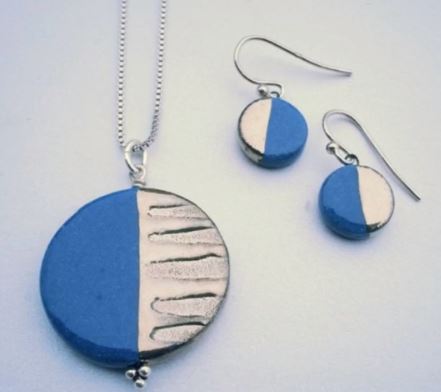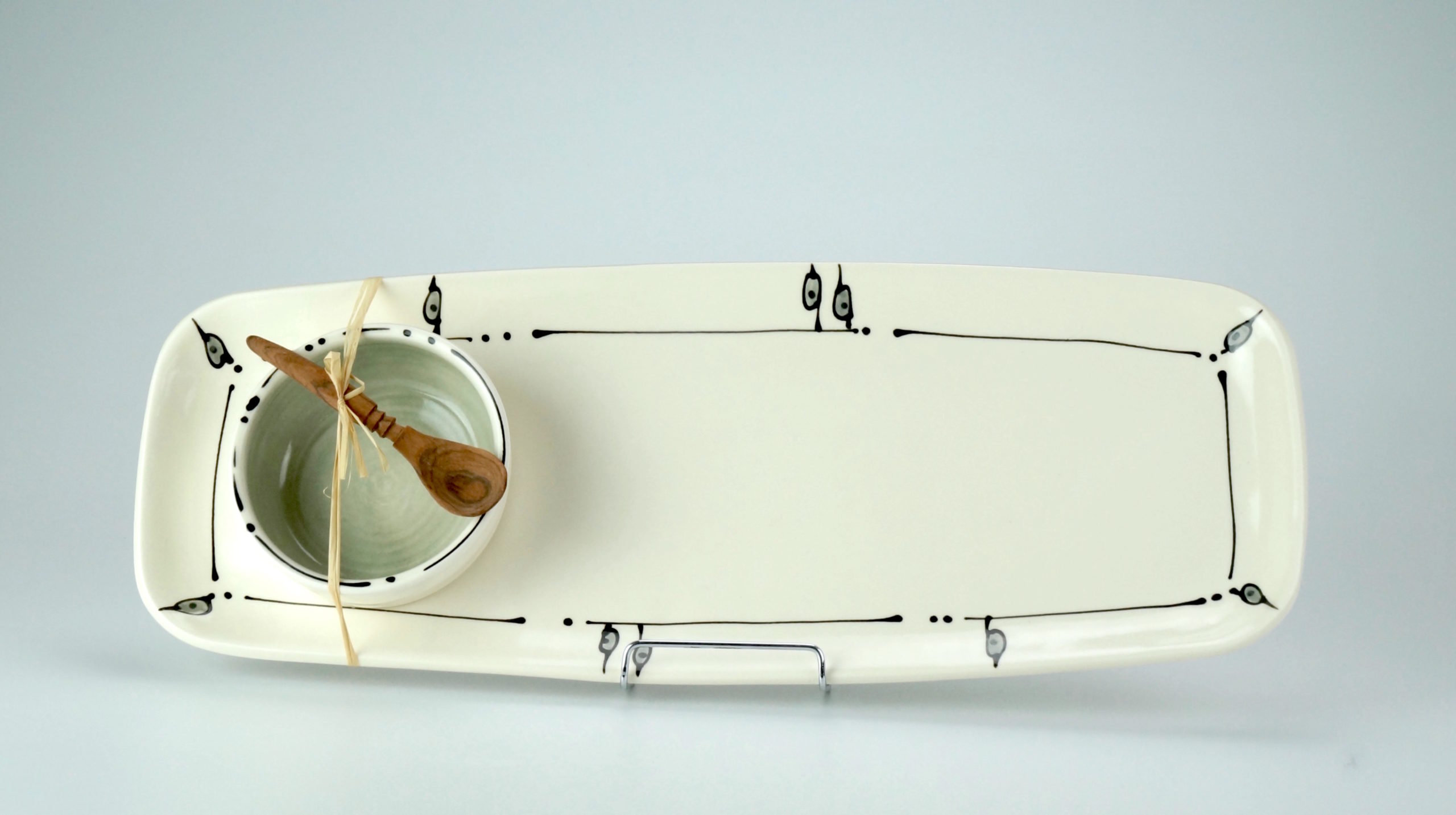by Jane Litchfield
Congratulations! Your art or craft is at a place where you are ready to make it your livelihood. Now what? Starting a creative business is exciting and a little scary – and you should approach it much the way you would any kind of business. Here are 10 key steps.
1. Research your market
Iris Dorton makes functional pottery that balances beauty with utility. Image courtesy of the artist.
“You need to know who your target audience is, and how to talk to them. Your research should tell you what they do, where they are, what platforms they are on. That’s where you go,” says Afshari, who presents workshops on starting a creative business. Wondering where to start? Afshari suggests going to your local business centre or economic development centre.
You’ll also want to suss out the competition. Do a SWOT analysis (strengths, weaknesses, opportunities, threats) on similar businesses in your market. What are their price points? Where/how do they sell?
What if your research turns up a lot of competition? “There will always be someone making something similar,” Afshari says, “It’s how you talk about it that matters.”
Which brings us to our next point….
2. Know your “why”
Maybe it’s the look on a customer’s face when they find that perfect piece, maybe it’s because you have stories inside you that demand to be told, or maybe — like Iris Dorton of Blue Iris Studios — you took a pottery class that changed your life. Whatever your reason, you need to know why you are doing this. Your “why” is not only compelling for customers, but also for you on those days when you need motivation to get out of bed in the morning (or stay up late at night).
Afshari says that when she sees people fail it is often because they are not passionate about what they do, and they simply lose steam.
3. Know yourself
Dorton stresses that before deciding to launch, it is important to look inside. “Loving making doesn’t mean you’re going to be love making a living that way. How do you want your life to look? Know your strengths and weaknesses and know what you’ll need help with. Are you self-motivated? Are you a procrastinator? For me, the hardest part about being a potter is working alone all day.”


In other words, do an honest SWOT analysis of yourself, and adjust your plans accordingly.
Which brings us to…
4. Create a business plan
Sorry, being creative doesn’t mean you can get away without a plan. Set some specific goals. You’ll thank yourself later.
Your business plan will answer simple questions such as how much product you can make, how much you can realistically sell, what your overhead costs are, and how you will fund your inventory. “It will probably change in a year or two, but it’s great to have goals to work toward,” says Afshari, who is Marketing and Communications Manager at WorkInCulture.
Afshari recommends using online business tools to write a business plan, such as those from Futurpreneur Canada or BDC.
5. Possibly pivot
Now that you’ve committed to specifics, be prepared to change. If your plan was to specialize in square-metre works, but they’re gathering dust while your square-foot studies fly off the shelves, you might want to change gears. Dorton switched to making porcelain jewelry when she had an injury, and she continues to sell it today.

6. Don’t neglect bookkeeping
The important thing is to set up systems and develop habits from the start and then stick to them, Afshari says.
Dorton agrees: “You can’t make [your products] 100% of the time. If you drop the ball on paperwork, you’ll regret it. If you know you can’t do it or won’t do it, you better find somebody who will.”
Afshari says one of the first things you should do is to open a separate bank account. “It helps you stay organized, especially if you’re not good at bookkeeping. You can see what you’re spending, and it helps you budget and keep track of expenses and income.”
Even something as simple as collecting receipts and bills in envelopes will give you a leg up come tax time. “I keep a folder with each line number [of the tax forms] on it,” says Dorton.
Again, there are many online platforms for bookkeeping, and phone apps to remind you of deadlines. Ask others in similar businesses what they use. If you’re not already doing your own taxes, however, that may be a sign that you will need help with bookkeeping, Afshari says.
It’s not necessary to register for HST until you have collected $30,000 in revenue in the past 12 months, or in a given quarter. If you cross that threshold, you must apply within 30 days.
7. Start lean
No corporate jet, yet. But seriously, don’t spend money renting a storefront until you’ve tried selling at a market, online, or in another existing shop first. Can you keep up with the demand? Is there demand? Do consider renting or borrowing expensive equipment for your first shows.
8. Market yourself
“I love making pots. I hate photographing pots, telling people how beautiful they are, and shouting ‘look at me’ on social media,” admits Dorton.
Marketing may not be your favourite thing either, but people need to know you’re out there and where and why to buy your work. Ideally, create a brand and a logo. They add to your credibility and are recognizable across various platforms.

Although you may be tempted to rely on social media, you do need a website. (It doesn’t have to be perfect.) “Your website is your landing area; people can go from there to social media,” says Afshari. There are many simple drag and drop platforms for building a site that are created for non-developers. Also you can host an online store through your site, using services like Shopify, Square, Wix, and others.
Where you sell depends on your target market. Dorton does some shows, some wholesale, and sells some things only in her shop (179 Woolwich St., Guelph, as of mid-June). She says online sales are challenging for a potter. “I would need a whole packing room with giant rolls of bubble paper. You have to decide who you are and what you do. Online doesn’t work for me.”
Guelph Arts Council helps promote members and lists calls to artists and upcoming exhibitions and sales. Need some help with applying to shows? Drop in or give us a call. And check out our 5 easy steps on How to Write Your Artist’s Bio.
WorkInCulture also offers resources such as free webinars on specific business topics including branding and e-commerce.
9. Talk to people
Talk to other working artists, others who have started small businesses, people who might buy from you, and friends and family. All these people can help you hone in on what your business should look like and where to get help. “Don’t work in a bubble,” Afshari says. This applies once you are up and running, too. Ask clients and strangers at exhibits what they love about your work. “It’s encouraging and energizing to hear from others.”
10. Believe in yourself
Of course you won’t have everything figured out when you launch your business, and if you wait for the perfect time, it won’t happen. So go for it.
Dorton says she has no regrets around giving up her successful marketing writing career to become a potter. “It’s the hardest thing I’ve ever done to make a living, but I wouldn’t trade it for anything.”









